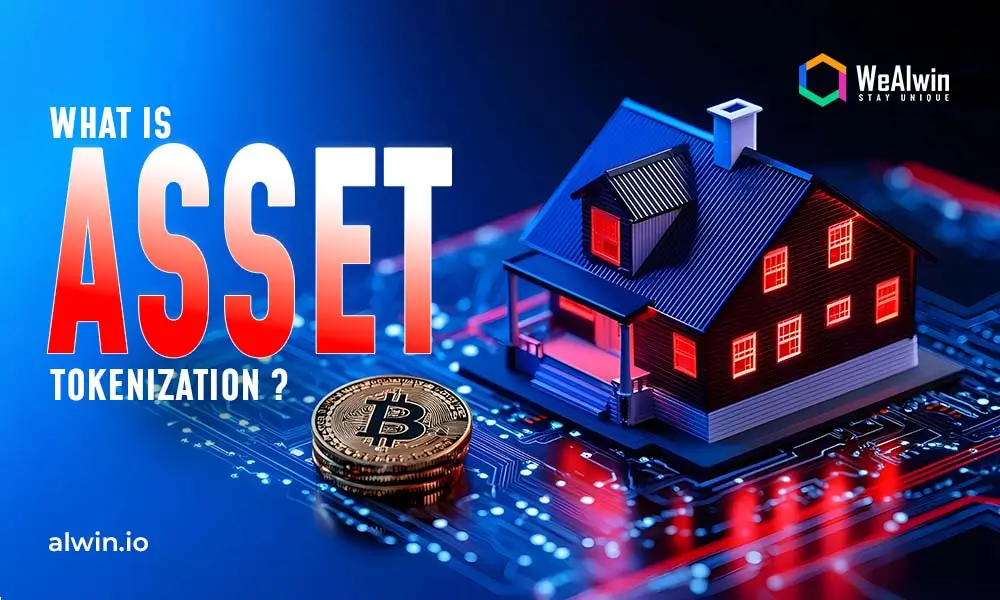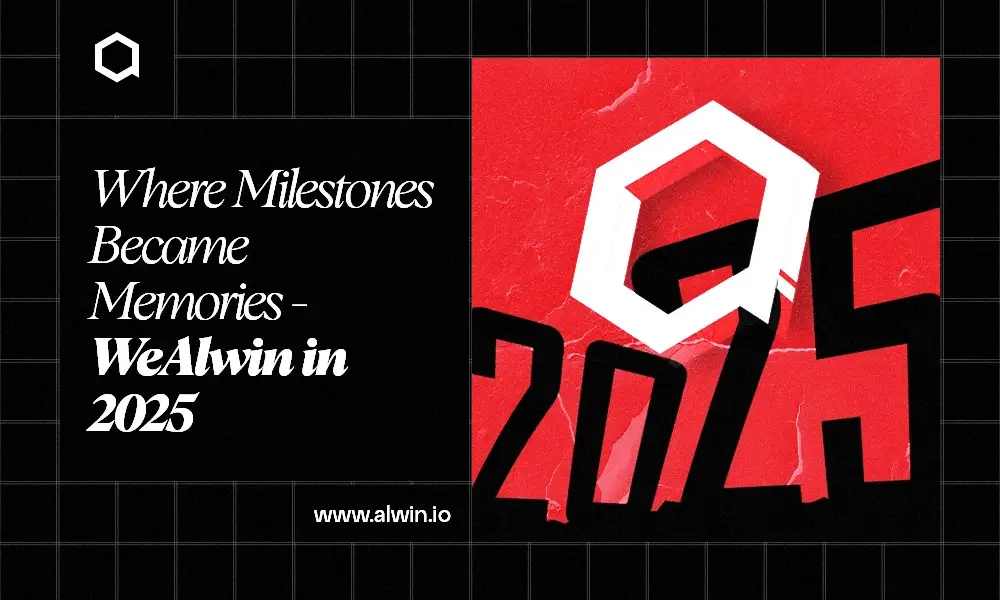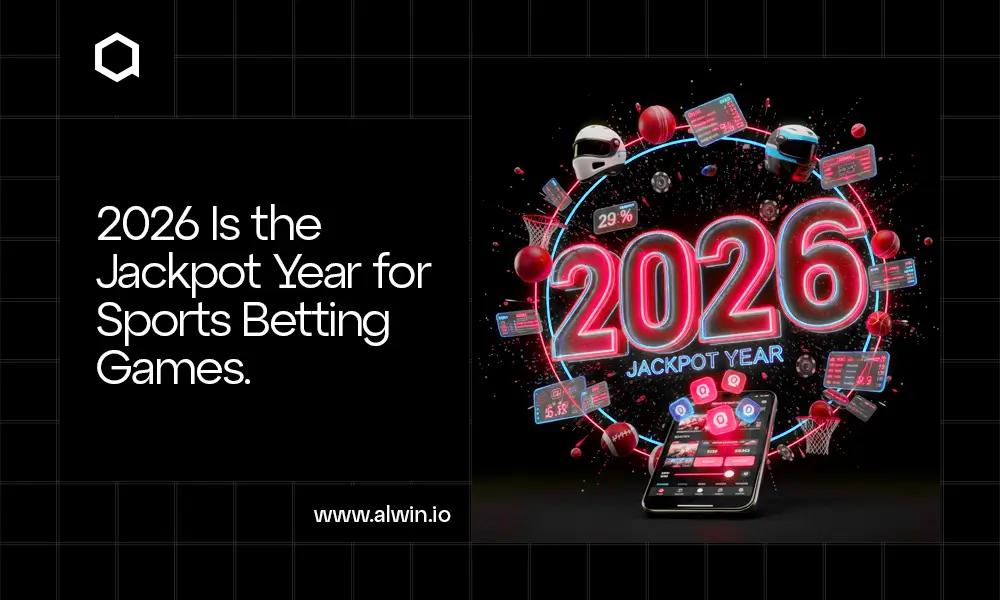Imagine a world where you can own a fraction of a luxury yacht, invest in a renowned piece of art, or have a stake in prime real estate all at the click of a button. Step into the world of asset tokenization where traditional barriers to investment crumble, and a new era of digital ownership begins. As blockchain technology redefines financial landscapes, asset tokenization emerges as a game-changer, opening the door to accessing high-value assets and creating unprecedented opportunities for investors.
The asset tokenization market is set for significant growth, with projections estimating a market cap of around $2 trillion by 2030, excluding cryptocurrencies and stablecoins. As of 2023, it stands at approximately $87 billion, with an expected compound annual growth rate (CAGR) of 18.8% through 2032. Real estate is projected to lead this sector, making up nearly one-third of all tokenized assets.
What is Asset Tokenization?
The process of transforming ownership rights from real-world assets into digital tokens stored on a blockchain is known as asset tokenization. This creative approach lets us represent both physical assets, like real estate and art, and intangible ones, such as stocks and intellectual property, as digital tokens. By using blockchain technology for asset tokenization, we can improve liquidity, allowing for functional ownership. This makes it easier for a wider range of investors to enter markets that have traditionally been hard to access.
Asset tokenization removes key barriers and makes investing opportunities more accessible. It plays a crucial role by allowing individuals to invest in high-value assets, leading to more efficient transactions, less dependence on intermediaries, and greater transparency in ownership. As the financial landscape continues to change, asset tokenization is emerging as a key force for innovation, fundamentally altering how we manage, trade, and value assets in the digital world.
Current Market Trends in Asset Tokenization
Current trends in asset tokenization reflect significant growth and rapid institutional adoption. Major players like BlackRock are launching tokenized funds, indicating broader acceptance. Notably, U.S. government bond tokenization surged by 450% in 2023, making it the largest asset class tokenized that year. Additionally, countries like Singapore and Japan are testing tokenization initiatives with established financial institutions, showcasing global momentum.
The popularity of Non-Fungible Tokens (NFTs) is paving the way for broader acceptance of tokenized assets. As NFTs demonstrate unique ownership models, they are influencing the tokenization of real-world assets like art and collectibles. As the technology matures, it promises to enhance liquidity and accessibility for traditionally illiquid assets, allowing fractional ownership and broader participation from retail investors.
Types of Assets That Can Be Tokenized
Asset tokenization can encompass a wide variety of asset types, each benefiting from the unique features of blockchain technology. Here are the primary categories of assets that can be tokenized:
1. Tangible Assets
Tangible assets are physical items of value that can be touched and measured, such as real estate, machinery, and inventory. They play a crucial role in a company's operations and can be sold or used to generate revenue.
Real Estate: Properties can be fractionalized into tokens, allowing multiple investors to own a share.
Artworks and Collectibles: Valuable items like paintings, antiques, and rare collectibles can be tokenized for shared ownership.
Physical Commodities: Assets such as gold, diamonds, and agricultural products can be represented as tokens.
2. Intangible Assets
Intangible assets are non-physical items of value that cannot be touched or measured, such as trademarks, patents, copyrights, and goodwill. These assets add to a company's competitive edge and overall worth yet do not have a physical location.
Intellectual Property: Tokenizing patents, copyrights, and trademarks makes licensing and ownership monitoring easier.
Carbon Credits: Tokenization allows for more efficient trading and tracking of carbon credits in environmental markets.
Renewable Energy Certificates: These can be tokenized to promote investment in sustainable energy projects.
3. Financial Assets
Financial assets are monetary instruments that represent a claim to ownership or contractual rights to future cash flows, such as stocks, bonds, bank deposits, and derivatives. They are easily traded and necessary for investment and liquidity management.
Stocks and Bonds: Traditional financial instruments can be digitized to enhance liquidity and accessibility.
Derivatives: Options and futures contracts can also be tokenized for easier trading.
Private Equity: Tokenization has the potential to expand the pool of investors who may participate in private investment opportunities.
4. Fiat Currencies
Fiat currencies are government-issued currencies that have no fundamental value and are not backed by actual commodities. Their value relies on public trust and confidence, making them the standard form of money in most economies.
Stablecoins: Digital currencies backed by fiat reserves (e.g., USDC, USDT) represent a significant portion of the tokenized asset market.
5. Other Asset Types
Other asset types refer to various non-traditional investments and resources, such as collectibles, natural resources, intellectual property, and digital assets. These assets can provide unique value and diversification opportunities in a portfolio.
In-game Assets: Virtual goods in gaming environments, such as skins or characters, can be tokenized for ownership transfer.
Tickets and Loyalty Points: Event tickets or reward points can also be represented as tokens on a blockchain.
How Does Asset Tokenization Work?
Asset tokenization is a multi-step process that transforms ownership rights of real-world assets into digital tokens on a blockchain. This technique improves liquidity and accessibility while also streamlining asset administration and trading. Here’s an elaboration on how asset tokenization works:
Asset Identification
The first step in tokenization is selecting the asset, which can be tangible (like real estate or art) or intangible (such as intellectual property or financial securities). This choice is crucial as it affects the regulatory framework and market potential of the tokenized asset.
Token Definition
After identifying the asset, the next step is to determine the type of token that will represent it. Tokens can be fungible (interchangeable, like currency) or non-fungible (unique, like collectibles). This choice impacts how the asset will be traded and valued in the market.
Smart Contract Development
This self-executing contract outlines the rules and conditions for transferring ownership and making transactions automated and secure. By eliminating intermediaries, smart contracts lower costs and improve efficiency.
Compliance and Verification
Ensuring compliance with legal regulations is crucial in asset tokenization. The issuer must adhere to all relevant laws, which may require engaging third-party auditors to confirm the legitimacy of the asset and its adherence to regulatory standards.
Token Issuance
After compliance checks are complete, digital tokens are minted and issued on the blockchain as certificates of ownership for the underlying asset. The issuance can take various forms, like Initial Coin Offerings (ICOs) or Security Token Offerings (STOs), based on the asset type.
Trading and Management
Following token issuance, they can be traded on various platforms, enhancing liquidity and allowing for fractional ownership. Blockchain technology guarantees that all transactions are recorded transparently and permanently, instilling confidence in ownership and transaction history.
Benefits of Asset Tokenization
Asset tokenization offers significant benefits by utilizing blockchain technology. It enhances liquidity, enables fractional ownership, and improves transparency, making valuable assets more accessible to a wider range of investors.
Enhanced Liquidity
A key advantage of asset tokenization is improved liquidity. By converting assets into digital tokens, they can be easily traded on secondary markets. This is especially beneficial for traditionally illiquid assets like real estate or fine art, enabling investors to buy and sell fractional ownership with fewer barriers and less hassle.
Global Accessibility
Tokenization democratizes investment opportunities by allowing assets to be traded globally. This enables investors from various locations to participate directly, eliminating intermediaries and facilitating cross-border transactions, thereby expanding the investor base significantly.
Lower Barrier to Entry
Asset tokenization reduces the minimum investment required to access specific assets, making them more accessible to a broader spectrum of investors. This fractional ownership allows individuals to invest in high-value assets with smaller amounts of capital, attracting new participants to the market.
Improved Transparency
Blockchain technology offers an immutable and transparent record of ownership and transaction history. Each token is tied to specific ownership rights, making tracking and auditing straightforward. This transparency builds trust among investors and minimizes the risk of fraud or manipulation.
Reduced Costs
Asset tokenization significantly lowers transaction costs by eliminating intermediaries and streamlining processes. Automated smart contracts enable faster processing and reduce administrative burdens, enhancing overall efficiency.
Enhanced Security
Tokenized assets utilize the strong security features of blockchain technology. Its decentralized nature makes it difficult for malicious actors to interfere with ownership records, ensuring a secure environment for asset management.
Use Cases of Asset Tokenization
Asset tokenization is changing several sectors by allowing real-world assets to be represented as digital tokens on a blockchain. Here are some popular use cases:
Real Estate
Tokenization in real estate allows property owners to divide ownership into smaller, tradable units, enabling fractional ownership. This makes it easier for investors to participate without significant capital. For instance, a $5 million residential property could be tokenized into 500 tokens valued at $10,000 each, drawing in a wider range of investors.
Financial Assets
Tokenizing financial instruments like stocks, bonds, and private equity enhances accessibility and liquidity. These tokenized assets can be traded more efficiently, enabling on-chain lending, borrowing, and staking through decentralized finance (DeFi) applications. This approach opens up investment opportunities and reduces transaction costs compared to traditional trading methods.
Intangible Assets
Intangible assets like intellectual property (IP), carbon credits, and renewable energy certificates can be tokenized as well. Tokenizing IP rights helps creators manage licensing and royalties with transparent ownership records, while tokenized carbon credits simplify trading in environment markets, allowing smaller investors to participate in sustainability efforts.
Collectibles and Art
Tokenization makes high-value collectibles and artworks more accessible by allowing for fractional ownership. Platforms like Mintable enable artists to turn their creations into non-fungible tokens (NFTs), creating new revenue streams and increasing market engagement. This approach also helps combat fraud, ensuring that buyers receive genuine pieces.
Commodities
Precious metals like gold and silver can be tokenized to enable fractional ownership and enhance liquidity in the commodities market. This allows retail investors to gain exposure without having to buy physical commodities directly.
Healthcare
In the healthcare sector, asset tokenization can improve patient data management and streamline medical supply chains. By tokenizing sensitive information, patients can retain control over their data while ensuring privacy and security. This approach minimizes the risk of data breaches and enhances the efficiency of healthcare services.
Conclusion
Asset tokenization marks a transformative shift in the management, trading, and investment of assets. By converting physical assets into digital tokens on a blockchain, it enhances liquidity, democratizes access to investment opportunities, and promotes greater transparency and security. The crucial service in this dynamic landscape is Asset Tokenization Platform Development, which provides the infrastructure necessary for seamless transactions and effective asset management. In a digital and interconnected financial landscape, embracing asset tokenization will be vital for those looking to navigate the future of investment. The journey into this new era of finance is only beginning, and those who engage with it early will likely reap the most significant rewards.
As we also see the impact of blockchain technology, it's clear that the future of finance lies in exploring its potential. Whether you're an investor, entrepreneur, or technologist, the world of blockchain development offers countless opportunities to discover.



